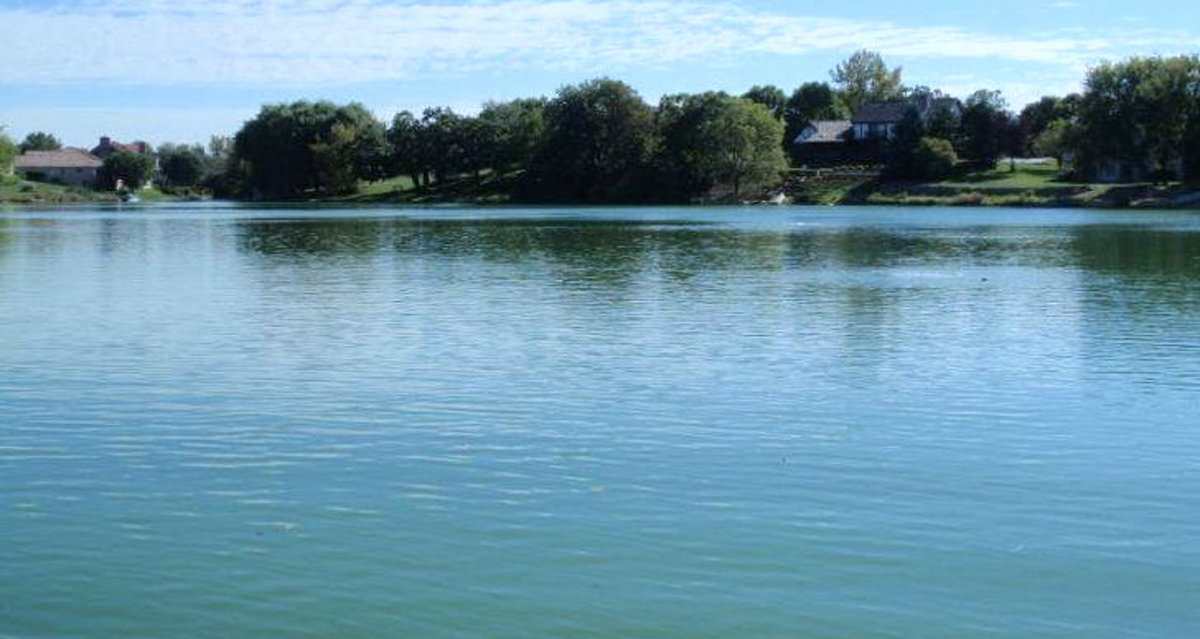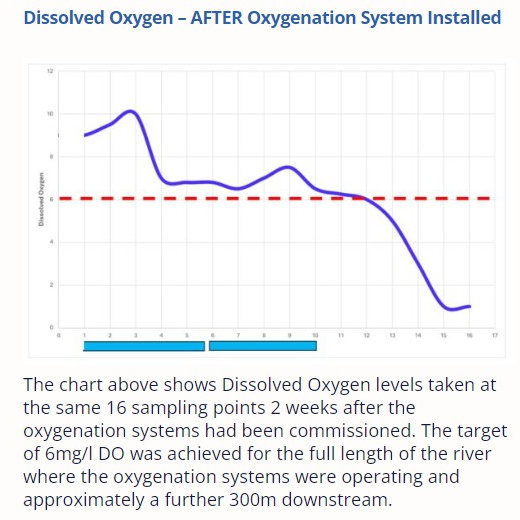RIVER REMEDIATION
INNOVATIVE RIVER SOLUTIONS FOR COMPLEX CHALLENGES
Rivers are intricate and dynamic water bodies that play a crucial role in our ecosystem.
While most people associate rivers with rapidly moving and freely flowing water, the reality beneath the surface is often quite different. A river’s velocity vectors follow a parabolic curve, with zero flow at the bottom and maximum flow at the surface.
This leads to a stark contrast in water quality, as surface water is oxygenated by the atmosphere, while bottom water is often stagnant and devoid of dissolved oxygen.
The biological health of rivers is constantly threatened by seasonal variations in water level and flow and the excessive inputs from rural and urban watersheds. Addressing these challenges requires a deep understanding of river dynamics and a wealth of experience in river restoration.


At Clean-Flo International, we have a proven track record of successfully remediating even the most polluted rivers. A prime example is our work on the Helpe Mineure River in France, which had been classified as unsuitable for any use by the French Government due to pollution from a manufacturing plant and raw sewage from the city.
We designed a comprehensive river remediation program and collaborated with French engineers to implement it. The project resulted in measurable improvements in water quality and fish biology 43 kilometers downstream of the intervention’s starting point, transforming the entire stretch of the formerly polluted river into a suitable resource for fishing, recreation, and animal drinking water.
The success of the Helpe Mineure River project was recognized when the City of Fourmies, France, was awarded the prestigious “Prix de l’Environment” for cleaning up the river.


Currently, we are working in partnership with Bio-West for their client, the Central Utah Water Conservancy District, to remediate the Lower Provo River.
This river has suffered from hypoxia, resulting in fish kills, excessive algae growth, and the formation of toxic cyanobacteria harmful algal blooms (HABs). Our collaborative efforts are restoring the river’s health by addressing the root causes of these issues and implementing tailored solutions to revitalize the ecosystem and improve water quality for the benefit of the local community and wildlife.
At Clean-Flo International, we have developed and delivered river improvement and restoration solutions that not only enhance river water quality and aesthetics but also restore the biology and health of the river from the bottom to the surface in a manner that propagates downstream synergistically.

Our approach is tailored to the unique characteristics of each river, considering factors such as flow dynamics, pollutant sources, and ecosystem health.
As a water professional, you understand the importance of maintaining and restoring the health of our rivers. By partnering with Clean-Flo International, you can leverage our expertise and innovative solutions to tackle even the most complex river remediation challenges.
Our team is committed to working closely with you to develop customized strategies that deliver lasting results and contribute to the overall well-being of our river ecosystems.
Contact us today to learn more about how Clean-Flo International can help you achieve your river remediation goals and make a positive impact on the environment.
Download the Lake Management ACTION Plan E-Book
Ready to explore how oxygenation can transform your lake? Download Clean-Flo’s Lake Management ACTION Plan E-Book to learn more about our innovative solutions, real-world results, and how we can help restore and protect your lake.
